Last Updated on August 26, 2025 12:24 pm by Laszlo Szabo / NowadAIs | Published on August 26, 2025 by Laszlo Szabo / NowadAIs
Top 10 AI Game Builders: Transform Your Game Development Journey in 2025 – Key Notes
AI game builders have transformed game development by automating asset creation, reducing production timelines by up to 60%, and democratizing access to professional-quality game creation tools for independent developers and small studios.
Modern AI game builders offer comprehensive solutions spanning the entire development pipeline, from initial concept generation and asset creation to quality assurance testing and deployment, enabling more efficient and creative development workflows.
The integration of AI game builders into professional development environments requires strategic planning, team education, and gradual adoption approaches to maximize benefits while maintaining quality standards and creative control over final products.
AI Game Builder Industry is Changing
Game development has undergone a profound transformation with the introduction of AI game builders that are changing how creators bring their visions to life. These sophisticated tools harness artificial intelligence to streamline every aspect of game creation, from initial concept development to final deployment. Whether you’re an aspiring indie developer or part of a professional studio, understanding the capabilities of modern AI game builders can significantly accelerate your development timeline while maintaining exceptional quality standards.
The evolution of AI game builders represents more than just technological advancement – it signifies a democratization of game creation itself. Traditional barriers that once required extensive programming knowledge, artistic expertise, and substantial financial resources are dissolving as these intelligent systems enable creators to focus on storytelling, gameplay mechanics, and player experience rather than getting bogged down in technical implementation details.
The Impact of AI Game Builders on Modern Development
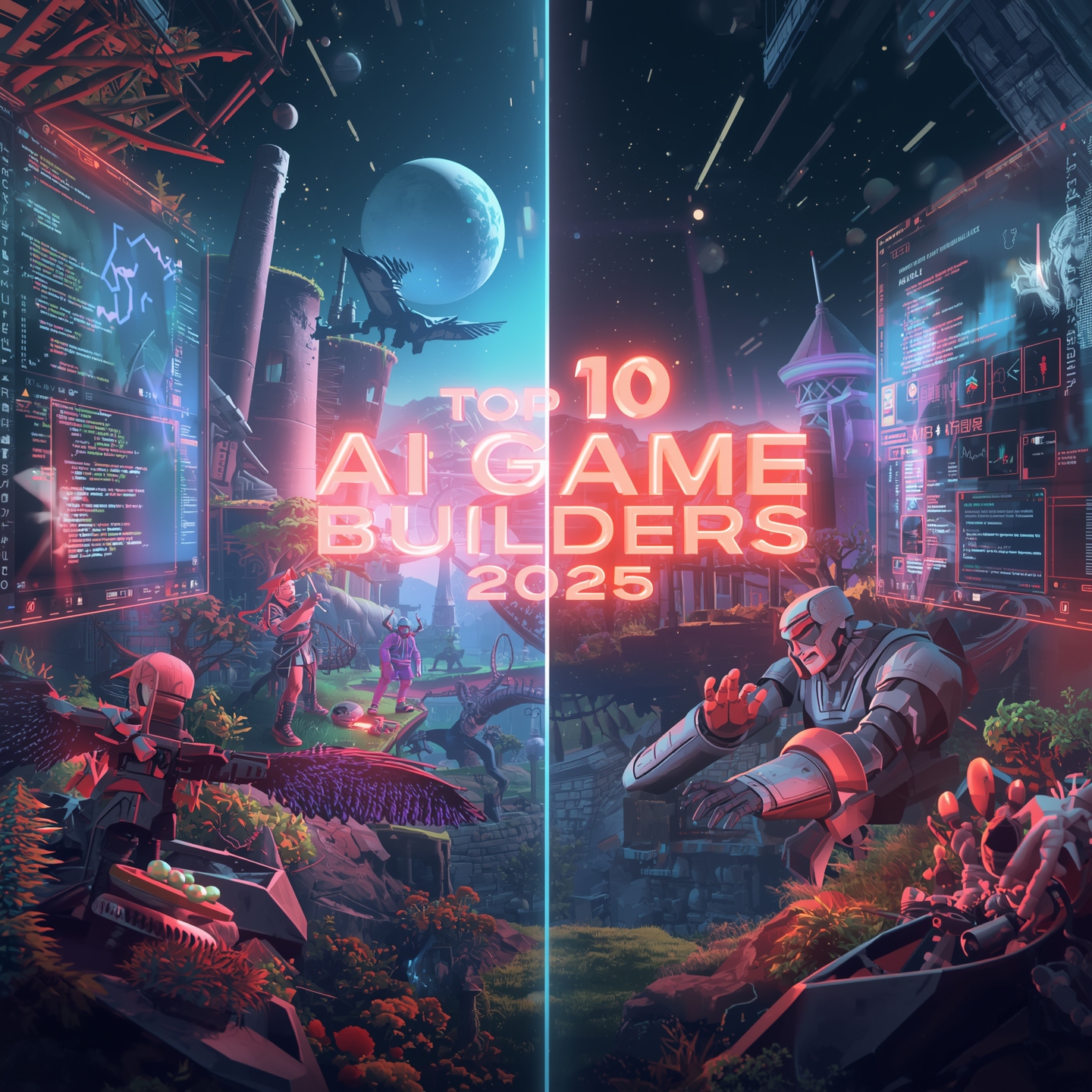
AI game builders are fundamentally altering the game development paradigm by introducing automation capabilities that were previously unimaginable. These platforms from Alpha3D’s comprehensive analysis utilize advanced machine learning algorithms, generative adversarial networks, and natural language processing to understand developer intent and translate creative concepts into functional game elements. The transformation extends beyond simple asset generation to encompass complex gameplay mechanics, character behaviors, and even entire game systems.
The integration of AI game builders into development workflows has demonstrated measurable impact across the industry. According to Shadhin Lab’s research, studios report production time reductions of up to 60% for certain development phases, with particular improvements in asset creation, level design, and quality assurance processes. This efficiency gain allows teams to allocate more resources toward creative direction, player experience optimization, and innovative gameplay features that distinguish their products in an increasingly competitive market.
Modern AI game builders excel at handling repetitive and time-consuming tasks that traditionally consumed significant portions of development budgets. As highlighted in Lumenalta’s essential tools guide, by automating these processes, development teams can maintain focus on high-value creative work while ensuring consistent quality across all game components. This shift in resource allocation has proven particularly beneficial for independent developers and smaller studios that operate with limited personnel and budget constraints.
Rosebud AI: The All-in-One Game Development Powerhouse
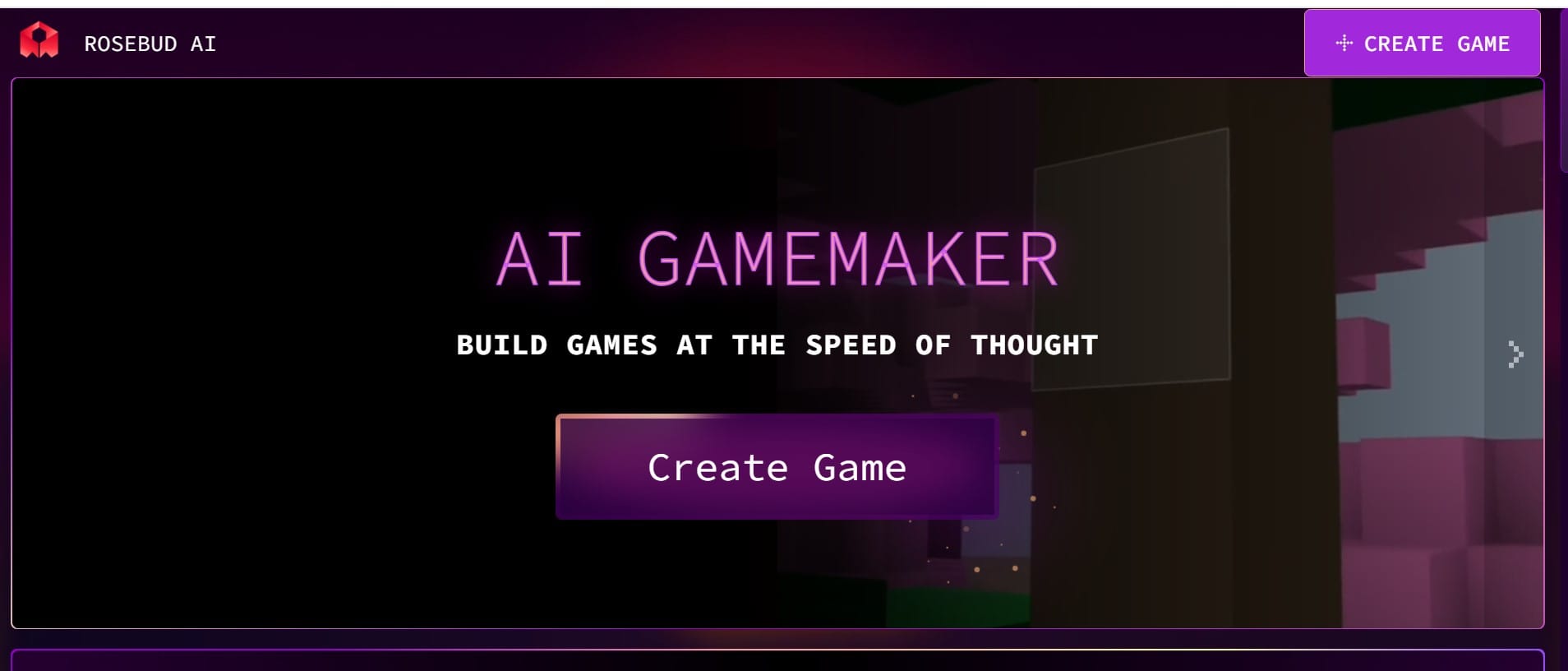
Leading the charge among AI game builders, Rosebud AI stands out as a comprehensive solution that generates complete games from simple text descriptions. This platform represents the pinnacle of integrated AI development, offering capabilities that span the entire game creation pipeline from initial concept to playable prototype.
The strength of Rosebud AI lies in its unified approach to game generation. According to Meshy AI’s comprehensive review, unlike tools that focus on specific aspects of development, this platform can simultaneously create programming code, high-quality visual assets, character animations, and functional game mechanics based on natural language input. Developers can describe their vision in plain English, and the system interprets these requirements to build corresponding game elements automatically.
What sets Rosebud AI apart from other AI game builders is its ability to maintain consistency across all generated components. The platform ensures that visual assets align with the intended art style, code follows proper architectural patterns, and gameplay mechanics work cohesively together. This holistic approach eliminates common integration issues that can arise when using multiple specialized tools from different providers.
The platform’s rapid prototyping capabilities make it invaluable for concept validation and iterative development processes. Game designers can quickly test different gameplay ideas, art styles, and mechanical approaches without investing significant time in manual implementation. This accelerated feedback loop enables more experimental and creative approaches to game design.
Unity Muse: Professional AI Integration for Industry Standards
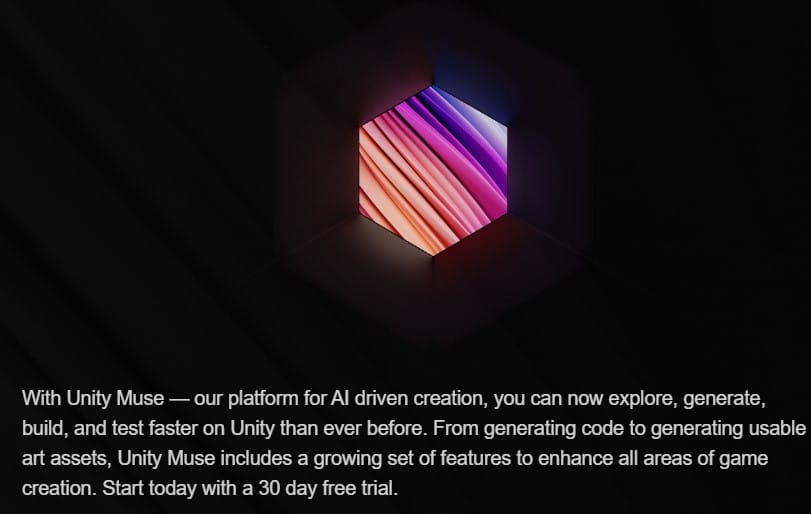
Source
Unity Muse represents a strategic integration of AI capabilities within the industry-standard Unity development environment. This suite of AI game builders tools provides seamless access to artificial intelligence features without requiring developers to leave their familiar workflow, making it an attractive option for professional studios already invested in the Unity ecosystem.
The Muse suite encompasses five core tools that address different aspects of game development. Unity’s official documentation shows that Muse Chat serves as an intelligent assistant that can answer Unity-specific questions, generate code snippets, and provide project-aware solutions. Muse Texture enables rapid creation of game-ready materials through text prompts or visual references, while Muse Sprite handles 2D asset generation with style consistency.
Advanced features like Muse Animate and Muse Behavior extend the platform’s capabilities into character animation and artificial intelligence systems. As demonstrated in GameFromScratch’s detailed review, the animation tool can generate humanoid character movements from text descriptions, significantly reducing the time required for basic animation sequences. Behavior trees can be constructed through natural language descriptions, allowing designers to implement complex NPC interactions without extensive programming knowledge.
The integration approach adopted by Unity Muse provides significant advantages for established development teams. Projects can gradually incorporate AI-generated content alongside traditional assets, allowing teams to evaluate the technology’s effectiveness without disrupting existing workflows. This measured adoption strategy has proven successful for studios seeking to modernize their development processes.
Layer AI: Style-Consistent Professional Asset Creation
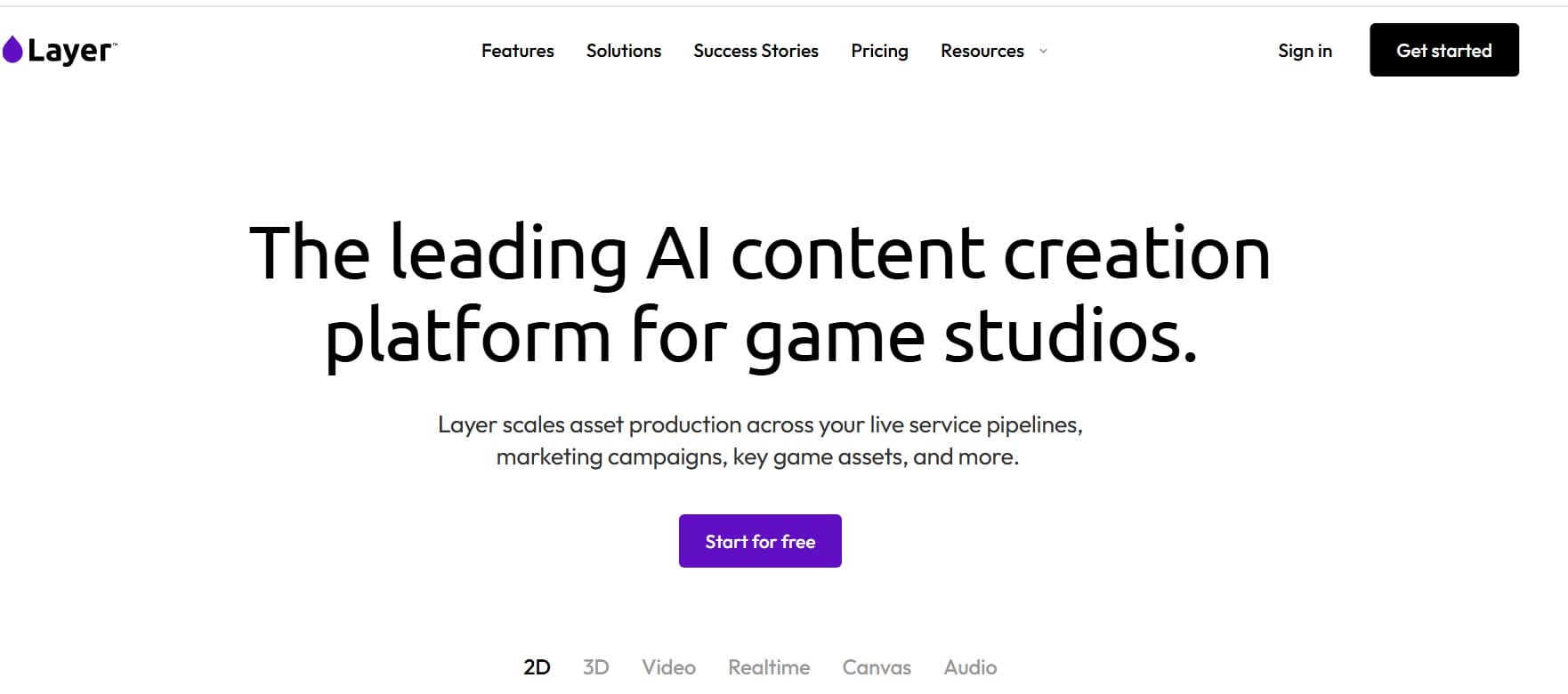
Source
Layer AI has established itself as a premier choice among AI game builders for professional game art creation, offering sophisticated tools that maintain visual consistency across large-scale projects. The platform excels at generating high-quality game assets that adhere to established art styles, making it particularly valuable for studios working on visually cohesive gaming experiences.
The platform’s ability to train AI models on existing artwork sets it apart from generic art generation tools. Artists can provide reference materials that define their project’s visual language, and Layer AI will generate new assets that seamlessly integrate with the established aesthetic. This capability is crucial for maintaining visual consistency in games with extensive asset requirements.
Professional studios appreciate Layer AI’s scalability and integration capabilities. The platform can generate large volumes of assets quickly, addressing bottlenecks that often occur during production phases requiring extensive environmental art or prop creation. Integration with popular game engines ensures that generated assets can be immediately incorporated into development pipelines.
The collaboration features built into Layer AI facilitate team-based workflows where multiple artists contribute to asset creation. Art directors can establish style guidelines and parameters that ensure all AI-generated content remains within the project’s artistic vision, regardless of which team member initiates the generation process.
Leonardo AI: Specialized 2D Artwork Excellence
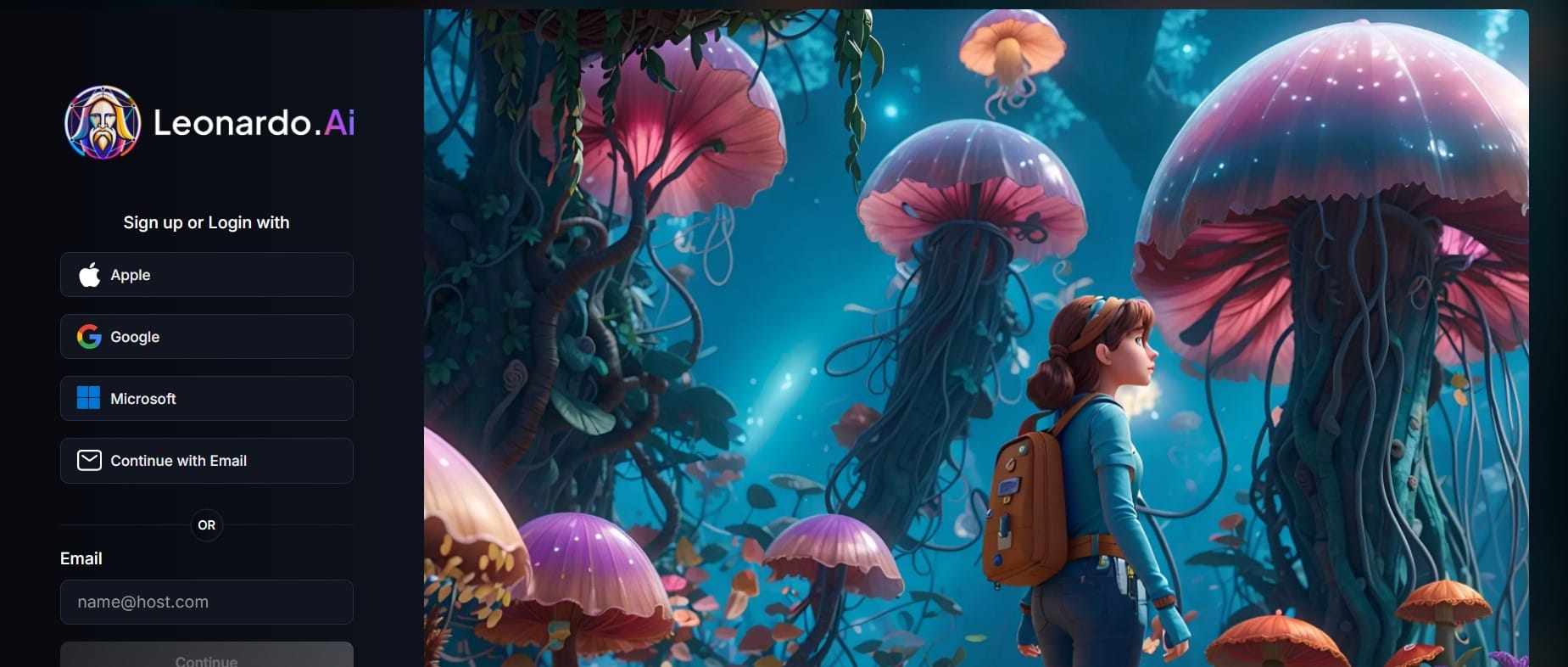
Source
Leonardo AI has carved out a specialized niche among AI game builders by focusing on high-quality 2D artwork generation and texture creation. While it may not offer the comprehensive game development features of some competitors, its excellence in 2D asset creation makes it an invaluable tool for projects requiring exceptional visual quality.
The platform’s strength lies in its ability to generate diverse 2D artworks from text prompts or existing visual references. Game developers can quickly create concept art, character designs, user interface elements, and environmental assets that maintain consistent quality and style. The AI Canvas feature provides additional editing capabilities that allow for precise refinements to generated artwork.
Leonardo AI’s integration with game development workflows is facilitated through its API, which enables automated asset generation within development pipelines. This capability has been leveraged by studios to create personalized game content, where assets are generated dynamically based on player preferences or gameplay requirements.
The platform’s texture generation capabilities extend its utility beyond pure artwork creation. Game developers can create seamless textures, normal maps, and other technical assets required for 3D game development, making Leonardo AI a versatile addition to any development toolkit focused on visual quality.
Meshy AI: Advanced 3D Model Generation Technology
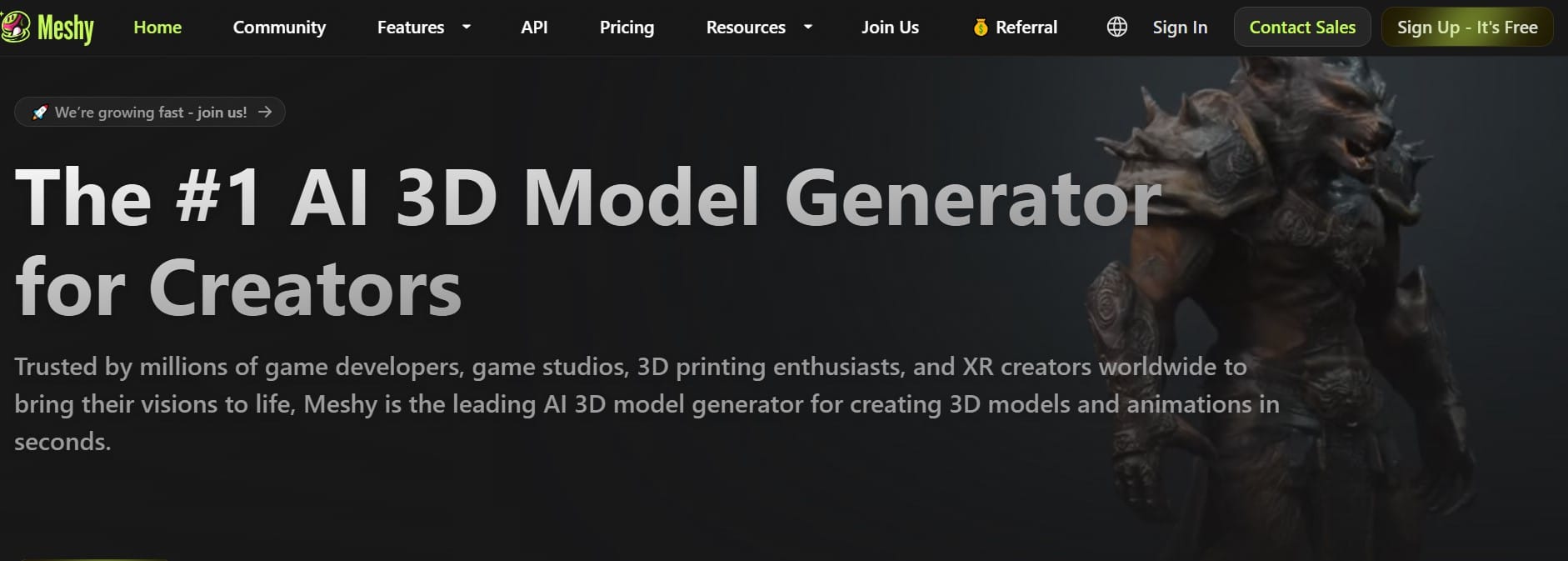
Source
Meshy AI represents a significant advancement among AI game builders specialized in 3D content creation, offering sophisticated text-to-3D and image-to-3D conversion capabilities. The platform addresses one of the most time-intensive aspects of game development by automating 3D model creation while maintaining professional quality standards.
The core functionality of Meshy AI centers on its ability to interpret textual descriptions and convert them into fully textured 3D models. This capability dramatically reduces the time required for asset creation, particularly beneficial for indie developers who may lack dedicated 3D modeling expertise. The generated models are optimized for real-world applications and integrate seamlessly with popular game engines.
Image-to-3D functionality extends the platform’s versatility by allowing developers to convert 2D concept art or reference images into 3D assets. This feature bridges the gap between concept development and implementation, enabling rapid iteration from initial design ideas to functional game assets.
The platform provides comprehensive control over texture richness and artistic style, ensuring that generated models align with project requirements. Developers can specify material properties, lighting characteristics, and geometric complexity to achieve desired visual outcomes while maintaining performance optimization for target platforms.
InWorld AI: Bringing Characters to Life Through Intelligence
InWorld AI stands out among AI game builders for its focus on creating intelligent, emotionally responsive characters that enhance player engagement through natural interactions. The platform goes beyond simple dialogue generation to create NPCs with persistent memory, emotional states, and goal-driven behaviors that evolve throughout gameplay.
The character creation process in InWorld AI involves defining personality traits, backstories, motivations, and behavioral patterns that guide AI responses. Characters can engage in voice-to-voice conversations, express emotions through facial expressions and body language, and respond to environmental triggers within the game world. This depth of character interaction creates more immersive and believable gaming experiences.
Integration with popular game engines like Unity and Unreal Engine enables seamless deployment of AI characters into existing projects. The no-code approach makes advanced character AI accessible to developers without extensive programming backgrounds, democratizing the creation of sophisticated interactive characters.
The platform’s real-time analytics capabilities provide insights into player-character interactions, enabling developers to refine character behaviors and dialogue systems based on actual player engagement data. This feedback loop ensures that AI characters continue to improve and provide meaningful interactions throughout the game’s lifecycle.
Promethean AI: Streamlining Virtual World Creation
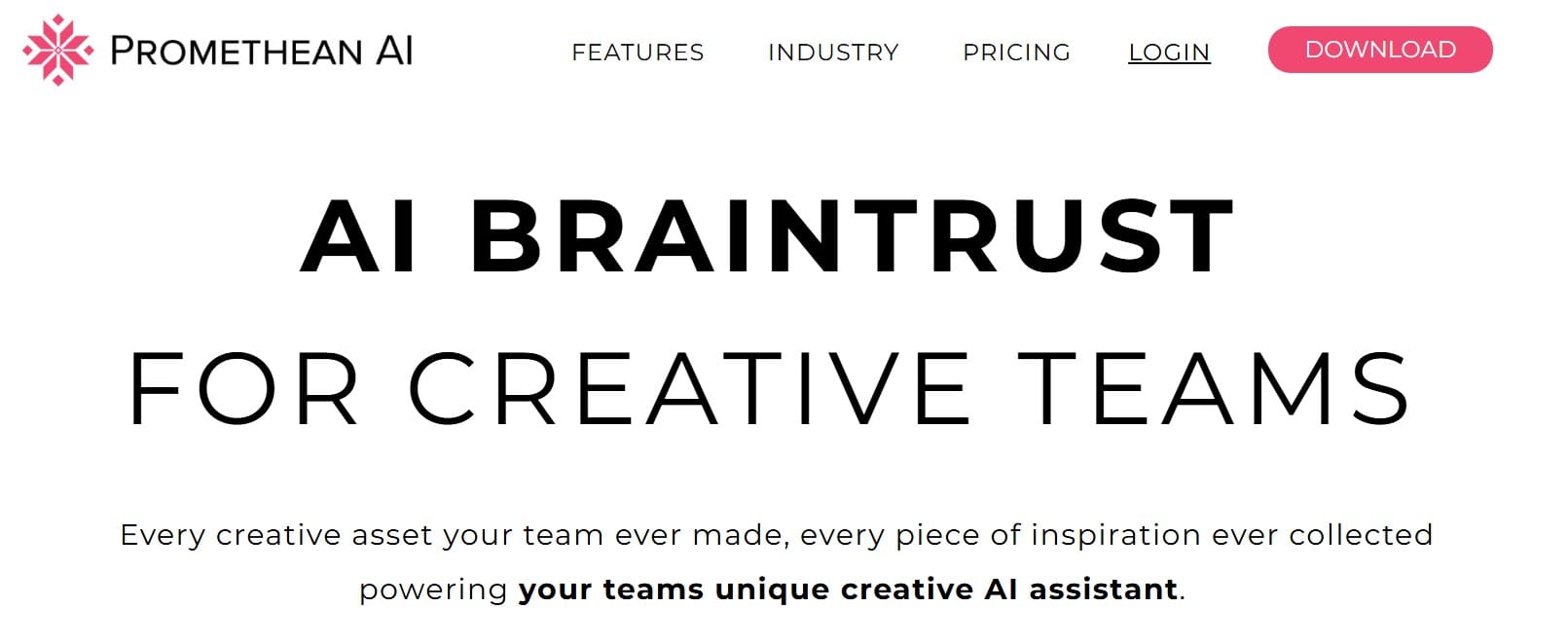
Source
Promethean AI addresses the complex challenge of virtual world building by automating asset management and environment creation tasks that typically consume significant development resources. This platform enables artists to focus on creative vision while intelligent systems handle the technical implementation of large-scale virtual environments.
The AI assistant built into Promethean AI can understand natural language commands and execute complex environment creation tasks accordingly. Artists can describe desired scenes, and the system will populate environments with appropriate assets, lighting, and atmospheric elements. This capability significantly accelerates the world-building process for open-world games and large-scale virtual environments.
Asset management capabilities extend beyond simple placement to include intelligent cataloging, version control, and workflow optimization. The platform learns from user interactions and project patterns to suggest improvements and automate routine tasks, freeing creative teams to focus on artistic direction and player experience design.
Enterprise features make Promethean AI suitable for large studio environments, with support for team collaboration, custom pipeline integration, and scalable deployment options. The platform’s enterprise-level security and workflow customization ensure compatibility with established production pipelines used by major game development studios.
Charisma AI: Interactive Storytelling on the Board

Source
Charisma AI specializes in creating interactive storytelling experiences through AI-powered character interactions and narrative systems. The platform enables developers to create games where players engage in natural language conversations with characters, influencing story progression through their choices and interactions.
The story engine combines controllable AI responses with generative improvisation, providing narrative designers with tools to create structured storylines while allowing for spontaneous character interactions. This balance between authorial control and AI creativity enables more dynamic and responsive storytelling experiences than traditional dialogue tree systems.
Multi-platform support ensures that interactive stories created with Charisma AI can be deployed across web, mobile, VR, and game engine environments. This flexibility makes the platform suitable for diverse project types, from educational applications to entertainment experiences and marketing campaigns.
Real-time analytics and conversation tracking provide insights into player engagement patterns and story effectiveness. Developers can analyze player choices, conversation paths, and emotional responses to optimize narrative design and improve player satisfaction with story content.
Replit Agent: Game Development Through AI
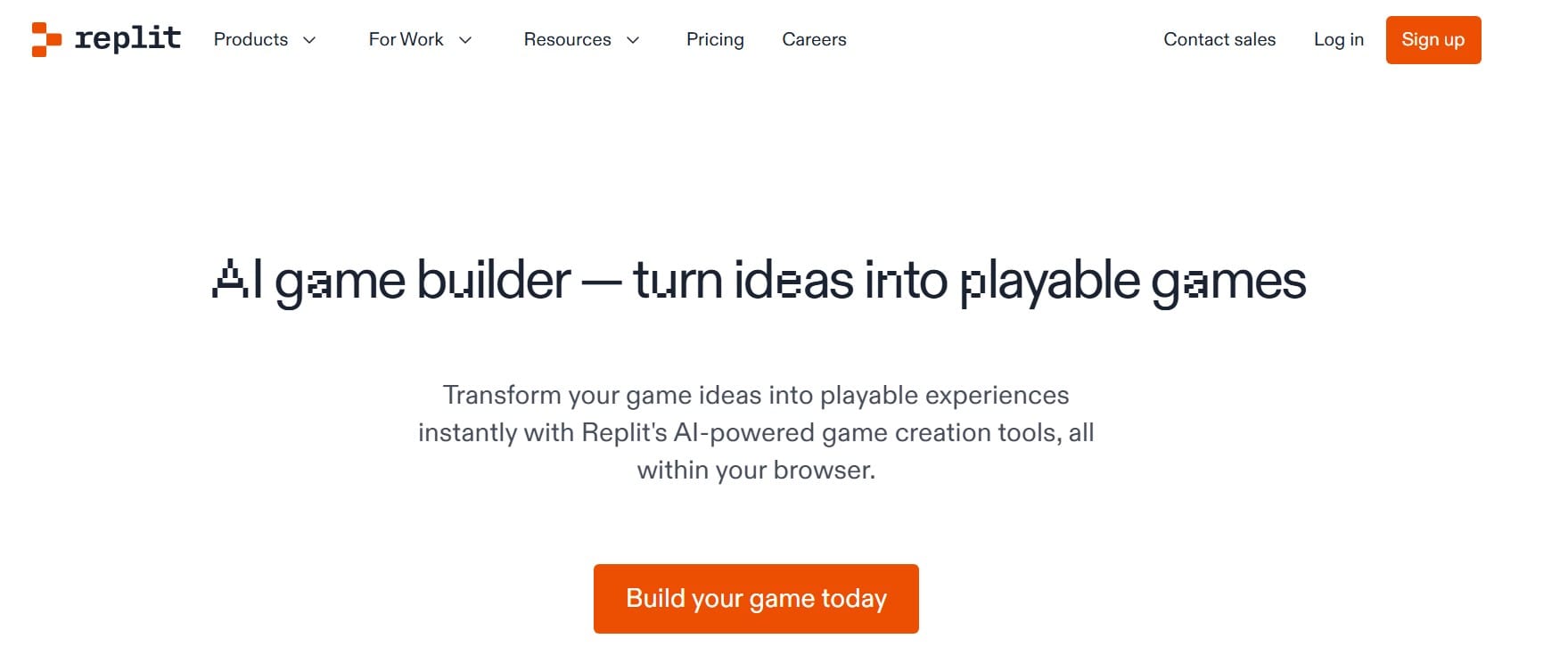
Source
Replit Agent represents a significant step toward making game development accessible to creators without extensive programming backgrounds. The platform transforms natural language descriptions into functional games through an integrated development environment that handles coding, asset management, and deployment automatically.
The browser-based development environment eliminates traditional barriers to game creation by removing installation requirements and configuration complexity. Developers can describe their game concepts in plain English, and Replit Agent generates complete project structures including code, assets, and functional mechanics. This approach makes game development accessible to educators, students, and creative professionals who may lack technical programming skills.
Real-time collaboration features enable team-based development where multiple contributors can work simultaneously on different aspects of a project. The Google Docs-like editing experience ensures that changes are synchronized instantly, facilitating remote development workflows and pair programming sessions.
Deployment capabilities built into Replit Agent enable one-click publishing of completed games, providing developers with immediate access to web-based distribution. This streamlined deployment process eliminates traditional hosting and distribution challenges, allowing creators to focus on game design rather than technical infrastructure management.
Cascadeur: AI-Powered Animation Excellence
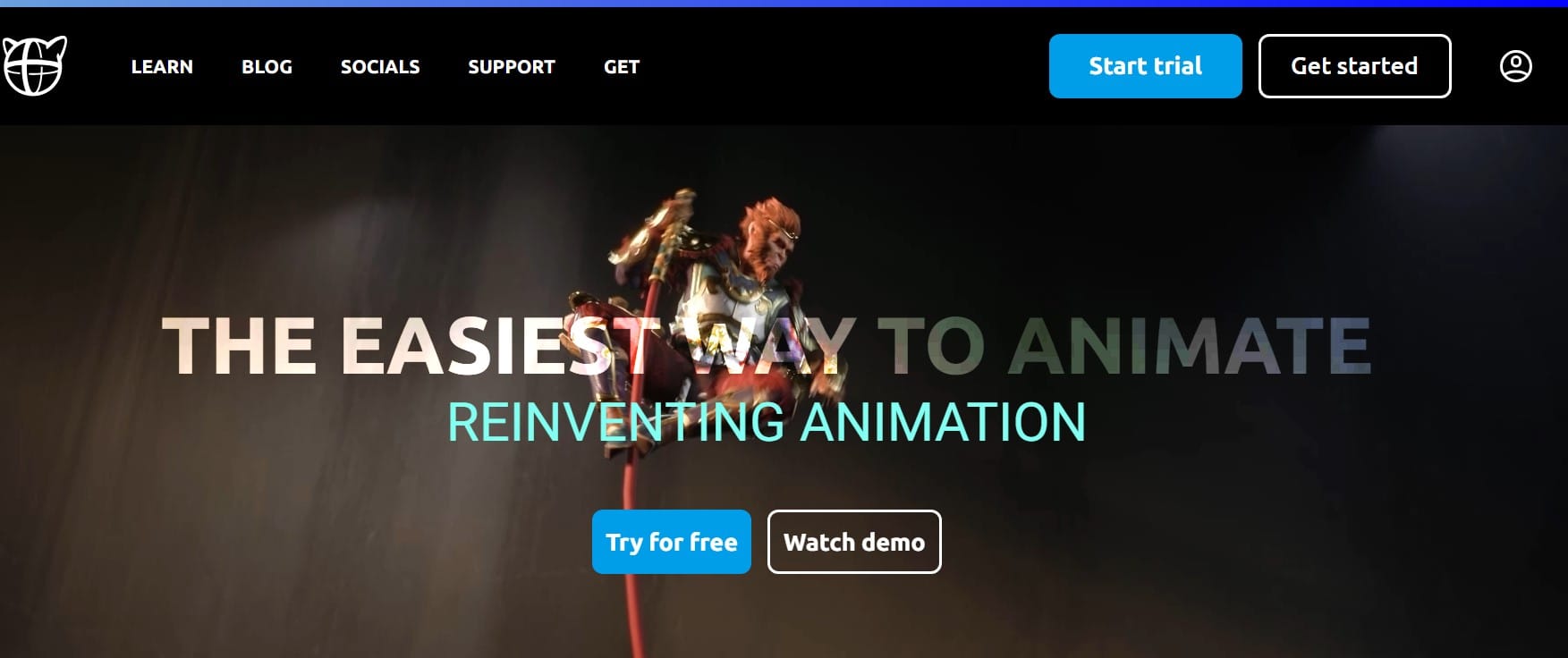
Source
Cascadeur brings artificial intelligence to character animation through neural network-powered tools that simplify the creation of realistic and natural movement sequences. The platform addresses one of the most technically challenging aspects of game development by automating complex animation processes while maintaining professional quality standards.
The AutoPosing system utilizes neural networks to help animators create natural character poses more efficiently. By positioning key control points, animators can allow the AI to automatically position remaining body elements according to realistic anatomical principles. This approach significantly reduces the time required for basic pose creation while maintaining natural movement characteristics.
AutoPhysics capabilities enable the generation of realistic motion sequences from minimal keyframe input. The system can interpolate between poses while considering physical constraints like gravity, momentum, and collision detection. This feature is particularly valuable for action sequences and complex character interactions that require physically accurate movement.
The platform’s integration with popular animation software and game engines ensures compatibility with existing production pipelines. Professional animators can incorporate Cascadeur into their workflows without disrupting established processes, gradually adopting AI assistance for appropriate tasks while maintaining full creative control over final results.
The Technical Foundation Behind Modern AI Game Builders
The effectiveness of contemporary AI game builders stems from sophisticated underlying technologies that combine multiple AI disciplines. Machine learning algorithms analyze vast datasets of existing games to understand patterns in successful game design, while generative adversarial networks create original content that maintains quality and consistency standards. Natural language processing enables these systems to interpret human creative intent and translate abstract concepts into concrete game elements.
Neural network architectures specifically designed for creative tasks power the asset generation capabilities found in most AI game builders. These networks are trained on diverse datasets encompassing various art styles, game genres, and design patterns, enabling them to generate content that feels both original and appropriate for specific project contexts.
The integration of cloud computing infrastructure enables AI game builders to provide scalable processing power for intensive generation tasks. This approach from platforms like Sealos ensures that individual developers can access sophisticated AI capabilities without requiring expensive local hardware, democratizing access to advanced game development tools.
Quality Assurance Revolution Through AI Testing
Modern AI game builders extend beyond content creation to encompass quality assurance through intelligent testing systems. Tools like modl:test deploy AI-powered bots that can automatically explore game environments, identify bugs, and assess performance characteristics across different scenarios and platforms.
AI testing bots simulate realistic player behavior patterns, enabling more comprehensive quality assurance coverage than traditional manual testing approaches. These systems can run continuously, identifying issues that might only emerge after extended gameplay sessions or specific interaction combinations that human testers might not naturally encounter.
Performance analytics generated by AI testing tools provide detailed insights into game optimization opportunities. Developers can identify bottlenecks, memory leaks, and other technical issues early in the development process, reducing the cost and complexity of fixing problems discovered later in production cycles.
Integration Strategies for Development Teams
Successfully incorporating AI game builders into existing development workflows requires strategic planning and gradual adoption approaches. Teams should begin by identifying specific bottlenecks or resource-intensive tasks that could benefit from AI assistance, then gradually expand AI integration as familiarity and confidence with the technology increases.
Training and education initiatives help development teams understand the capabilities and limitations of AI game builders. Successful integration requires that team members understand how to effectively prompt AI systems, interpret generated results, and integrate AI-generated content with traditional development processes.
Workflow optimization becomes crucial when combining AI-generated content with human-created assets. Teams must establish quality standards, review processes, and integration protocols that ensure consistency across all game elements regardless of their creation method.
Economic Impact and Cost Considerations
The adoption of AI game builders represents a significant shift in development economics, potentially reducing production costs while enabling smaller teams to create more ambitious projects. Studios report cost savings ranging from 40% to 60% in specific development phases, particularly asset creation and quality assurance processes.
Independent developers benefit disproportionately from AI game builders due to their ability to produce professional-quality content without requiring large teams or extensive specialized expertise. This democratization effect enables more diverse voices to enter the game development industry and compete with established studios.
However, the subscription costs associated with many AI game builders require careful consideration of project budgets and development timelines. Teams must evaluate the cost-benefit ratio of AI tool subscriptions against traditional development approaches, considering both immediate expenses and long-term productivity gains.
Future Developments and Industry Trends
The evolution of AI game builders continues to accelerate, with emerging technologies promising even greater capabilities and integration possibilities. According to Whimsy Games’ trend analysis, cloud gaming infrastructure enables real-time AI content generation during gameplay, opening possibilities for truly dynamic and personalized gaming experiences that adapt continuously to individual player preferences.
Cross-platform development capabilities are becoming standard expectations for AI game builders, enabling developers to create content that seamlessly operates across mobile, PC, console, and VR environments. This unified approach reduces the complexity of multi-platform development while ensuring consistent player experiences across different devices.
The integration of advanced analytics and machine learning enables AI game builders to learn from player behavior and automatically optimize game elements for improved engagement and retention. This capability represents a shift toward self-improving games that continuously evolve based on real-world player data.
Definitions
AI Game Builders: Artificial intelligence-powered software platforms that automate various aspects of game development, including asset creation, code generation, animation, and testing processes.
Generative AI: A subset of artificial intelligence that creates new content, such as images, text, audio, or code, based on patterns learned from training data.
Neural Networks: Computing systems inspired by biological neural networks that enable machines to learn and make decisions by processing data through interconnected nodes.
Procedural Generation: The algorithmic creation of game content through automated processes rather than manual design, often used for generating levels, environments, or assets.
Machine Learning: A branch of artificial intelligence that enables systems to automatically learn and improve from experience without being explicitly programmed for every task.
Natural Language Processing (NLP): Technology that enables computers to understand, interpret, and generate human language in a meaningful way.
Asset Pipeline: The workflow and tools used in game development to create, process, and integrate various game assets like 3D models, textures, animations, and audio files.
Quality Assurance (QA): The systematic process of ensuring that games meet specified quality standards through testing, debugging, and performance optimization.
Frequently Asked Questions (FAQ)
- How do AI game builders ensure the quality and originality of generated content? Modern AI game builders employ sophisticated quality control mechanisms including multi-stage validation processes, style consistency algorithms, and originality verification systems. These platforms utilize advanced machine learning models trained on diverse datasets to ensure generated content meets professional standards while avoiding copyright infringement. Quality assurance features include automated testing of generated assets, style matching algorithms that maintain visual consistency across projects, and collaborative review tools that enable human oversight of AI-generated content. Additionally, most AI game builders provide customization options that allow developers to fine-tune generation parameters to match specific project requirements and quality expectations.
- Can AI game builders completely replace traditional game development methods? While AI game builders significantly enhance development efficiency and accessibility, they are designed to augment rather than replace traditional development methods entirely. These tools excel at automating repetitive tasks, generating initial content drafts, and accelerating prototyping processes, but human creativity, strategic thinking, and quality oversight remain essential for successful game development. The most effective approach combines AI game builders with traditional development skills, allowing developers to leverage AI for productivity gains while maintaining creative control over game design, narrative elements, and player experience optimization. Professional game development still requires human expertise in areas such as game design philosophy, market analysis, and complex technical problem-solving that current AI systems cannot fully address.
- What are the learning curves and technical requirements for using AI game builders? Most modern AI game builders are designed with accessibility in mind, featuring intuitive interfaces that minimize technical barriers for new users. The learning curve varies depending on the complexity of the chosen platform and the user’s existing technical background, with most developers able to produce basic results within hours of initial use. Technical requirements are generally minimal since many AI game builders operate through cloud-based platforms accessible via web browsers, eliminating the need for powerful local hardware or complex software installations. However, maximizing the potential of these tools requires understanding prompt engineering techniques, asset integration workflows, and quality assessment procedures. Many platforms provide comprehensive tutorials, documentation, and community support resources to help users develop proficiency quickly and effectively.
- How do AI game builders handle intellectual property and copyright concerns? Reputable AI game builders implement robust intellectual property protection measures designed to prevent copyright infringement and ensure that generated content is legally safe for commercial use. These platforms typically train their AI models exclusively on licensed or public domain content, implement filtering systems to detect potential copyright violations, and provide legal protections for users who follow platform guidelines correctly. Most AI game builders offer clear licensing terms that grant users commercial usage rights for generated content, while some provide additional legal indemnification for enterprise clients. Users should carefully review the terms of service and licensing agreements for their chosen platform, maintain documentation of their creative process, and consider consulting with legal professionals for high-value commercial projects to ensure full compliance with intellectual property regulations.
- What is the future potential of AI game builders in the gaming industry? The future potential of AI game builders in the gaming industry is expansive, with emerging technologies promising even more sophisticated capabilities and integration possibilities. Industry experts predict that AI game builders will evolve to support real-time content generation during gameplay, creating truly dynamic and personalized gaming experiences that adapt continuously to individual player preferences and behaviors. Advanced features under development include emotional AI that can detect player sentiment and adjust game elements accordingly, procedural narrative systems that generate infinite storyline variations, and intelligent optimization algorithms that automatically balance gameplay mechanics for optimal player engagement. As cloud computing infrastructure continues to improve and AI models become more sophisticated, AI game builders are expected to become increasingly powerful while remaining accessible to developers of all skill levels, potentially transforming the gaming industry by enabling more diverse content creation and reducing barriers to entry for aspiring game developers.








